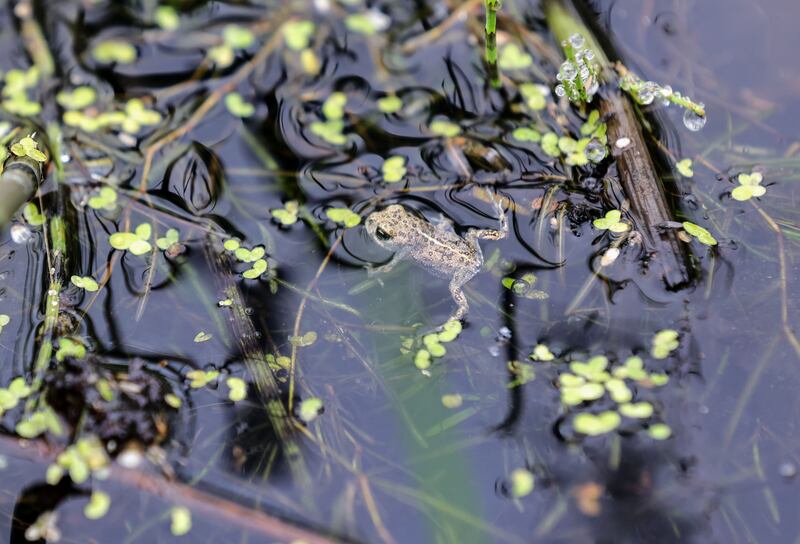
Hundreds of small natterjack toads are being released into the dunes at Inch, Co Kerry this week in what will be a first for Ireland’s newest national park, Páirc Náisiunta na Mara.
About 1,000 natterjacks, Ireland’s only native toad, have been bred in captivity at Dingle Oceanworld this year as part of a volunteer breeding programme run by the marine centre in conjunction with the National Parks and Wildlife Service (NPWS).
Strings of toad spawn and tadpoles were gathered by NPWS conservation rangers from ponds in and around Castlegregory and brought to the centre’s hatchery in May. They are strong enough now to be released into the wild.
“Once they lose their tails and grow their legs, they are fed on fruit flies,” said marine biologist Kevin Flannery, director of the Oceanworld programme.
Doireann Garrihy returns to troubled 2FM with theatrically elevated notions of her worth
‘Irish teenagers are so innocent. Where I’m from we learn not to be naive’
Swedish police investigate Irish link to country’s deadliest mass shooting
The idiot wind now howling through the US offers Ireland a transformative windfall
Unique to coastal Kerry, the singular striped toad is named after the sound of its distinctive mating call. Natterjacks are particularly vulnerable to predators and depend on access to shallow ponds for their survival during the early stage of their development. The mortality rate for natterjack spawn and tadpoles in the wild can be greater than 90 per cent.
A wet summer to date has been favourable for the ponds they live in, but the cold weather has made life more difficult, Mr Flannery said, as some of the tadpoles were in a poor state and there was much work in bringing them on in the hatchery.
As part of the conservation project, local farmers have been maintaining shallow ponds on farms in the Castlemaine Harbour and Castlegregory areas where the toad was once plentiful.
Minister of State for Nature Malcolm Noonan was in attendance on Tuesday as more than 500 Natterjack toads were released at Inch as local children and others watched on.
The NPWS has been working with Dingle Oceanworld and Fota Wildlife Park over the past seven years to explore if captive rearing can be used to boost the amphibian’s population at Inch. The captive rearing programme has shown a reduction in the mortality rate of this endangered species, with estimates putting it at less than 25 per cent.
“The captive rearing programme has provided a valuable boost to the population over the past seven years,” said NPWS toad expert Dr Ferdia Marnell. “However, longer term survival and breeding rates of the toads are still dependent on many other factors.
“The location of this unique habitat and flagship sand dune system at Inch within Páirc Náisiúnta na Mara, Ciarraí presents new opportunities for research into how we can further enhance conditions to protect them.“
- Sign up for push alerts and have the best news, analysis and comment delivered directly to your phone
- Join The Irish Times on WhatsApp and stay up to date
- Listen to our Inside Politics podcast for the best political chat and analysis










